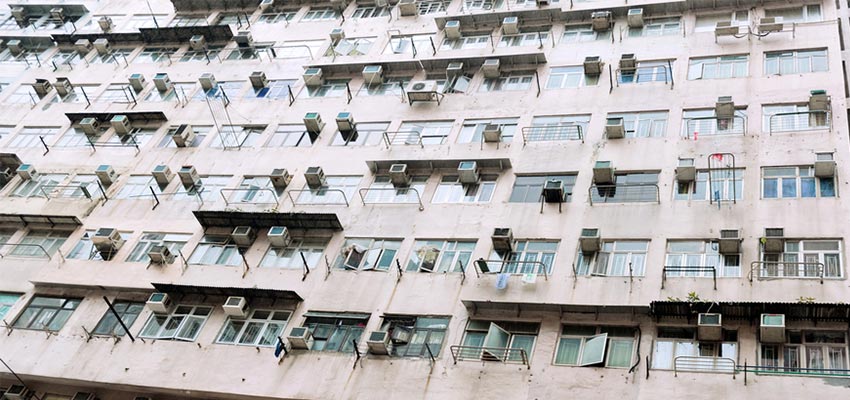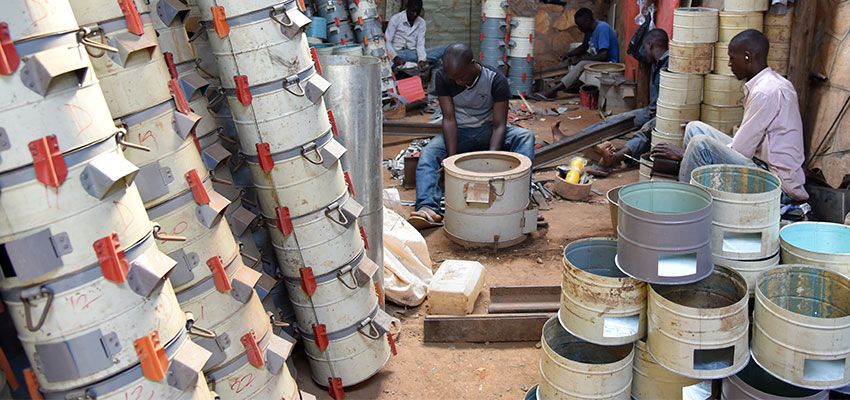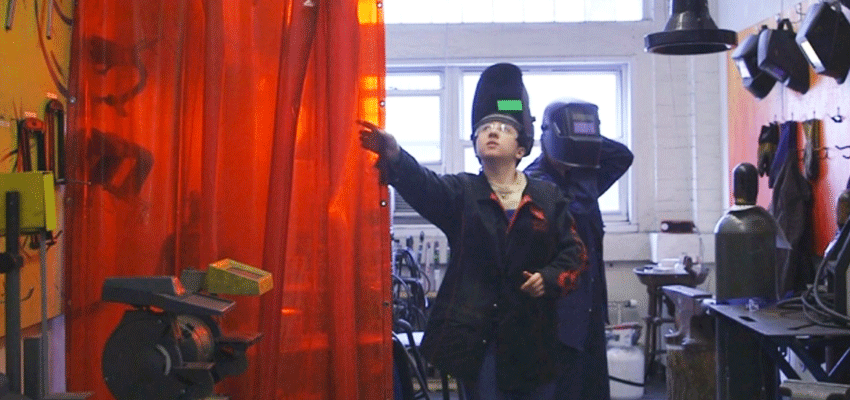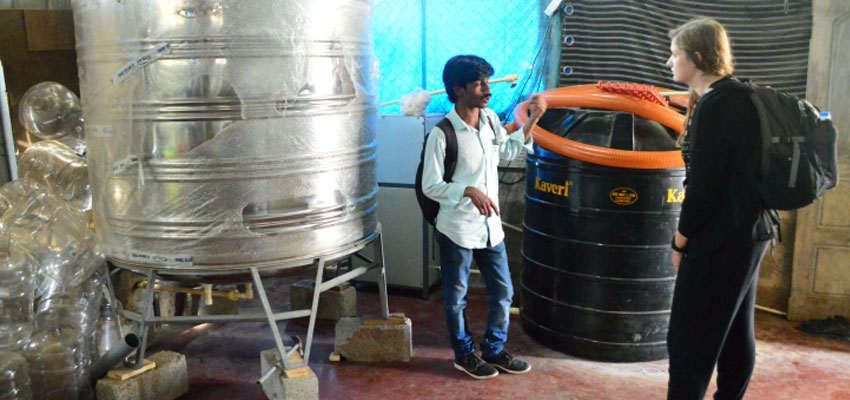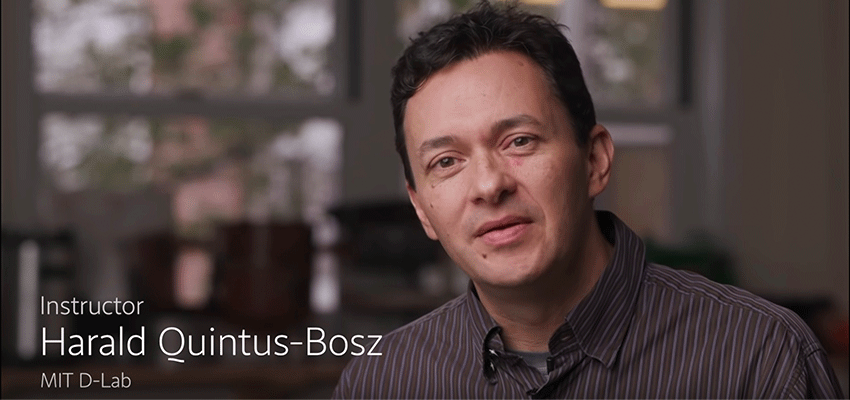
By replacing a bottleneck process of shoe-sole application with a prototype of a vulcanization machine we were able to provide a solution and analysis of a viable alternative to buying an industrial machine.
Student team
- Sabrina Hare '23, Mechanical Engineering (2A)
- Katana Finlason '23, Mechanical Engineering (2A)
- Nicholas Saavedra '22, Mechanical Engineering (2A)
- Natalie Cardenas '23, Mechanical Engineering (2A)
- Kwadwo Yeboah-Asare Jnr. '23, Aerospace Engineering
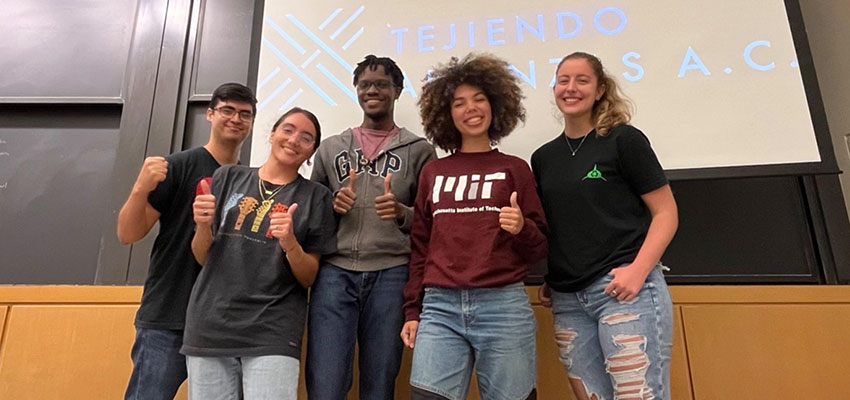
Community partners
- Tejiendo Alianzas
- Richard Hanson
Location
México
Problem framing
DAVA Artisan Design is a cooperative of artisans from the San Dionisio Ocotepec community in the state of Oaxaca, dedicated to the production of high-quality handmade sandals and shoes. DAVA is aiming to expand its production capacity but is limited by the defect rate and cycle time in the rubber sole attachment process. Our challenge was to increase the speed of attaching the soles on to DAVA shoes by replacing the process of direct application of adhesive and rubber with a machine that can melt and form a thermoplastic capable of directly adhering to the shoe.
Market context and competitive analysis
We ran an economic analysis to compare the expenses and revenues DAVA would experience under their normal production methods, switching to our D-Lab Press, or purchasing an industrial vulcanizer machine. Our D-Lab Press had the lowest average costs per year largely due to the low cost of the thermoplastic pellets versus the premade soles they currently use. However, the production using the Marqués industrial machine has the highest expected profit due to the high increase in production from reduced manufacture time. This assumes that all other processes in DAVA’s shoe making production line can scale up to match.
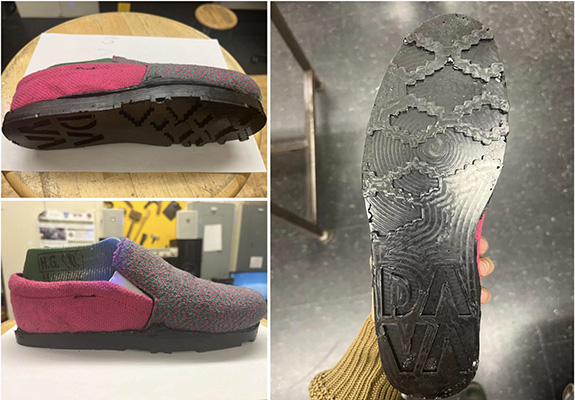
Solution including technical details
To form the soles ,we identified two varieties of Thermoplastic Elastomers as potentially suitable for DAVA’s use case. The plastics are designed to be directly injection molded to canvas which is ideal for both our and the Marqués machine. The mold is heated by a cartridge heater capable of output 525 Watts through a standard wall outlet. The cartridge heater is controlled by an insertion switch that has its own mold cavity. The switch will open when the built-in temperature sensor measures above a configurable temperature, in our case 210 degrees Celsius. This provides a simple control mechanism without the need for programming or a circuit board to reduce the manufacturing cost and complexity. The press is a modified QWORK hand grommet press adapted to press fit into the mannequin foot that DAVA already uses in various other stages of shoe production.
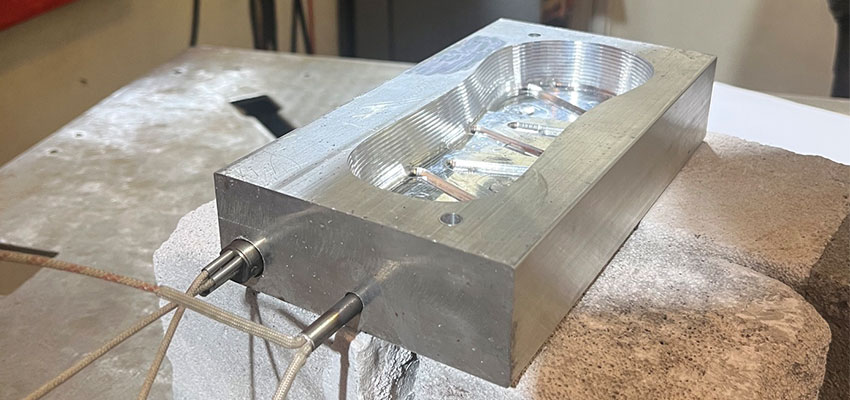
Hand-off to partner, next steps
Areas of improvement with the D-Lab shoe machine made in class include research on defining the accurate shot size of the mold, further refinement on the aluminum mold, and a better alignment of the shoe with the mold while the machine is in use. In order to improve the shape of the rubber sole on the shoe and eliminate flash further improvements can be made to the digital design before the mold is fabricated for production. Our mold is uniformly flat on the bottom and does not properly follow the curved profile of the shoe. Further improvements to the steel frame would investigate ways for it to be adjustable to allow for different mold heights to fit underneath.
MIT D-Lab Class
Contact
Emily Young, Co-Instructor Design for Scale
Macauley Kenney, Co-Instructor Design for Scale





